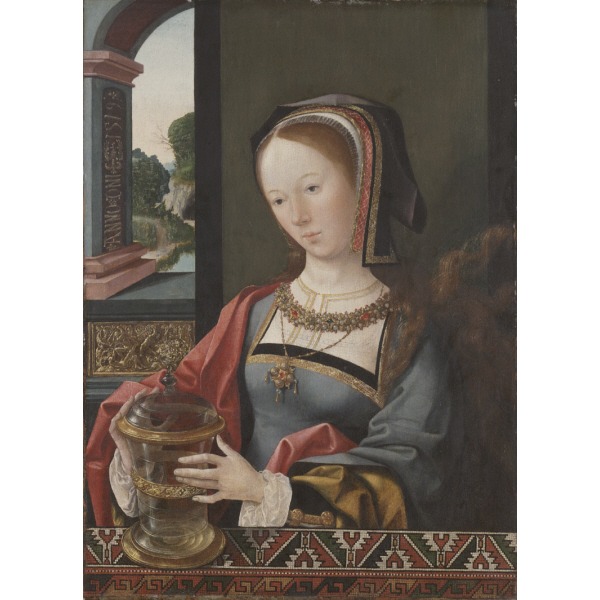And here it is again, partially visible (
Note: I found a better picture and now it's fully visible) in its “unstepped” reciprocal flavor in this 1519 painting of Jacob Cornelisz van Oostsanen, a Northern Netherlandish painter.

Incidentally Peter Stone puts this border among the Caucasian section, Daghestan, and calls it “C-15 Reciprocal Border” (1).
And what we see above it? The classical “Leaf and Calyx” border (C-63 in Stone’s). Exactly the same
unchanged design as we still see in much later rugs, especially Caucasian (not sure about Baluch but one never knows

).
Of course there is a close relationship between the “Leaf and Calyx” border and the one of the Batári-Crivelli rug above - I remember Wendel Swan wrote a paper on the subject but I cannot find a trace about it.
There are a few more paintings related to these borders. I think it’s worthwhile to open a new thread about them. I’ll do it later.
Stay tuned. Regards,
Filiberto
(1) Peter F. Stone,
Tribal & Village Rugs – The Definitive Guide to Design, Pattern & Motif